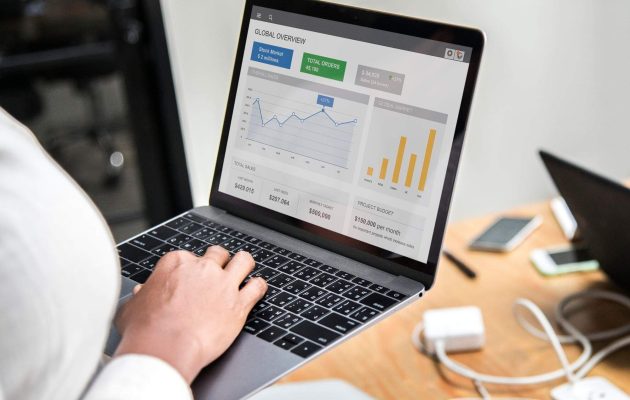Boost Your Revenue With These Local SEO Best Practices
In today’s digital landscape, we can’t overlook the power of local SEO to drive revenue for our businesses. We’ve seen firsthand how implementing best practices can transform a company’s online presence and attract more local customers. But it’s not just about showing up in search results; it’s about standing out and converting those potential customers into paying clients. As we explore these local SEO strategies, we’ll uncover the key techniques that can make a significant difference in your bottom line. So, are you ready to discover how to boost your revenue and outshine your local competitors?
Key Points
- Optimize your Google Business Profile with accurate information and regular updates to increase visibility.
- Implement a strategic local keyword approach in your website content and metadata.
- Build high-quality local backlinks through partnerships and community involvement.
- Actively manage customer reviews to improve reputation and attract more local customers.
- Create location-specific content and landing pages to target local search queries effectively.
Optimize Google Business Profile
Why is optimizing your Google Business Profile crucial for local SEO success? It’s the cornerstone of your local online presence, directly influencing how your business appears in Google Search and Maps. A well-optimized profile significantly boosts your visibility to potential customers in your area.
To maximize your profile’s effectiveness, we need to focus on several key elements.
First, make sure all basic information is accurate and complete. This includes your business name, address, phone number, website, and operating hours.
Next, select the most relevant primary and secondary categories for your business. These categories help Google understand what services you offer and match you with appropriate searches.
Add high-quality photos and videos showcasing your products, services, and location. Visual content increases engagement and helps customers form a connection with your business.
Regularly post updates, offers, and events to keep your profile fresh and engaging. Encourage satisfied customers to leave reviews, and respond promptly to all feedback, both positive and negative. This interaction builds trust and demonstrates your dedication to customer satisfaction.
Leverage Local Keywords
To effectively leverage local keywords, we must focus on geo-specific search terms and location-based long-tail keywords.
We’ll target phrases that combine our products or services with specific locations, such as city names, neighborhoods, or landmarks.
Geo-Specific Search Terms
For local SEO success, leveraging geo-specific search terms is essential. We need to incorporate location-specific keywords that our target audience is likely to use when searching for our products or services. This includes city names, neighborhoods, landmarks, and even local colloquialisms.
Let’s start by researching the most common geo-specific terms used in our area. We can utilize tools like Google Trends, SEMrush, or Moz Local to identify popular search phrases. Once we’ve compiled a list, we’ll strategically integrate these terms into our website’s content, meta titles, descriptions, and headers.
We shouldn’t forget to include geo-modifiers in our long-tail keywords. For example, instead of just “coffee shop,” we’ll use “best coffee shop in [city name]” or “[neighborhood] artisanal coffee roaster.” This specificity helps us rank higher for local searches and attracts more qualified leads.
Location-Based Long-Tail Keywords
Location-based long-tail keywords are a cornerstone of effective local SEO strategies. By incorporating these specific phrases into our content, we’re able to target potential customers in our immediate vicinity. These keywords typically combine our primary service or product with local identifiers, making them highly relevant to searchers in our area.
To effectively leverage location-based long-tail keywords, we should:
- Conduct thorough local keyword research
- Analyze competitor usage of local long-tail keywords
- Incorporate these keywords naturally into our website content
- Use them in meta descriptions and title tags
- Include them in our Google Business Profile
Build Local Backlinks
Building local backlinks is essential for enhancing local SEO performance. We’ll focus on two key strategies: targeting local directories and partnering with other businesses in your area.
These tactics can greatly boost your local online visibility and improve your search rankings for location-specific queries.
Target Local Directories
Targeting local directories is a pivotal strategy for building high-quality backlinks and improving local SEO. We need to focus on reputable, industry-specific directories that cater to our local audience. By listing our business in these directories, we’re not only enhancing our online visibility but also signaling to search engines that we’re a legitimate local entity.
To maximize the impact of local directory targeting, we should:
- Guarantee NAP (Name, Address, Phone) consistency across all listings
- Choose directories with high domain authority and local relevance
- Optimize our listings with relevant keywords and business descriptions
- Encourage customer reviews on these platforms
- Regularly update our information to maintain accuracy
It’s vital to prioritize quality over quantity when selecting directories. We should aim for niche-specific platforms that align with our industry and target audience. By doing so, we’re not only improving our local SEO but also connecting with potential customers actively searching for our services in the area.
Partner With Businesses
While directory listings provide a solid foundation, partnering with other local businesses can greatly amplify our local SEO efforts. Let’s focus on building high-quality local backlinks through strategic partnerships.
We’ll start by identifying complementary businesses in our area that aren’t direct competitors. For example, if we’re a bakery, we might partner with a local coffee shop or event planner.
Once we’ve identified potential partners, we’ll reach out to propose mutually beneficial collaborations. This could involve cross-promotions, joint events, or content sharing.
We’ll create valuable, location-specific content that our partners can link to, such as neighborhood guides or local business spotlights. In return, we’ll feature their content on our site, creating a reciprocal link network.
We’ll also consider sponsoring local events or organizations to earn backlinks from their websites. These community-focused efforts not only boost our SEO but also strengthen our local reputation.
Remember, quality trumps quantity in link building. We’ll aim for relevant, authoritative local sources rather than pursuing a high volume of low-quality links.
Encourage Customer Reviews
Customer reviews are an essential local SEO tool that can greatly enhance a business’s online visibility and credibility. By actively encouraging satisfied customers to leave reviews, we’re not only boosting our local search rankings but also building trust with potential clients. Google’s algorithm heavily favors businesses with numerous positive reviews, making this strategy pivotal for local SEO success.
To effectively encourage customer reviews, we should:
- Implement a post-purchase follow-up system
- Create easy-to-use review links for various platforms
- Train staff to politely request reviews from satisfied customers
- Respond promptly and professionally to all reviews, positive or negative
- Utilize review management software to streamline the process
Create Location-Specific Landing Pages
Location-specific landing pages serve as powerful tools in our local SEO arsenal. These pages target specific geographic areas, allowing us to tailor content for each location we serve. By creating unique pages for different cities, neighborhoods, or regions, we increase our visibility in local search results and provide relevant information to potential customers.
Let’s examine the key components of effective location-specific landing pages:
| Element | Purpose | Best Practice |
| Title | Identify location | Include city/region name |
| Meta description | Summarize content | Mention local services |
| Header tags | Organize content | Use location keywords |
| Local content | Provide relevance | Discuss area-specific info |
| NAP info | Improve consistency | Match Google My Business |
When developing these pages, we must focus on creating unique, valuable content for each location. This includes highlighting local landmarks, addressing area-specific concerns, and showcasing location-based testimonials. We should also optimize for local keywords and include location-specific schema markup to enhance our search engine visibility.
Ensure NAP Consistency
Consistency forms the backbone of effective local SEO, particularly when it comes to NAP (Name, Address, Phone number) information. We can’t emphasize enough how vital it’s to maintain uniform NAP details across all online platforms. Search engines rely on this consistency to verify your business’s legitimacy and improve its local search rankings.
To guarantee NAP uniformity, we recommend:
- Conducting a thorough audit of all online listings
- Using a standardized format for your business name, address, and phone number
- Updating outdated information promptly across all platforms
- Leveraging citation management tools to streamline the process
- Regularly monitoring for unauthorized changes or duplicate listings
Utilize Local Schema Markup
Beyond maintaining consistent NAP information, implementing local schema markup is an essential technique to enhance your business’s visibility in search results. Schema markup is a structured data vocabulary that helps search engines better understand and interpret the content on our websites. By utilizing local schema, we’re providing search engines with clear, machine-readable information about our business, including its location, hours, services, and more.
To implement local schema, we’ll use JSON-LD format, which Google prefers. We’ll include vital details like our business name, address, phone number, website URL, and business type. Additionally, we can add information about our products, services, reviews, and even upcoming events.
This structured data helps search engines create rich snippets, which are enhanced search results that stand out and attract more clicks.
Mobile-Optimize Your Website
In today’s mobile-first era, optimizing your website for mobile devices is vital for local SEO success. We must guarantee our sites are responsive, load quickly, and provide an excellent user experience on smartphones and tablets. Google prioritizes mobile-friendly websites in search results, making mobile optimization essential for our local SEO efforts.
To mobile-optimize our websites effectively, we should focus on:
- Implementing responsive design
- Compressing images and minifying code
- Utilizing Accelerated Mobile Pages (AMP)
- Optimizing for voice search and local queries
- Ensuring touch-friendly navigation and buttons
By prioritizing these elements, we’ll improve our site’s performance on mobile devices and boost our local search rankings. We must remember that mobile users often have different intentions than desktop users, frequently seeking quick, location-based information.
By catering to these needs, we’ll enhance user engagement and increase the likelihood of conversions.
Let’s regularly test our websites using Google’s Mobile-Friendly Test and PageSpeed Insights to identify areas for improvement. By continuously optimizing for mobile, we’ll stay ahead of the competition and maintain our visibility in local search results, ultimately driving more foot traffic to our businesses.
Frequently Asked Questions
How Long Does It Take to See Results From Local SEO Efforts?
We typically see initial local SEO results in 3-6 months. However, significant improvements can take 6-12 months. It’s a continuous process, and we’ll need to monitor, adjust, and optimize regularly to maintain and improve our local rankings.
What Budget Should Be Allocated for an Effective Local SEO Campaign?
We suggest allocating 10-20% of your marketing budget for local SEO. It’s important to invest in quality content, link building, and on-page optimization. Remember, we’re in this together; a well-funded campaign guarantees our collective success in local search.
Can Local SEO Strategies Work for Businesses With Multiple Locations?
Yes, we can effectively implement local SEO for multi-location businesses. We’ll optimize each location’s online presence, create location-specific content, and manage citations consistently. This strategy enhances our visibility in multiple local search results, boosting our overall market reach.
How Often Should Local SEO Tactics Be Updated or Revised?
We recommend reviewing and updating local SEO tactics quarterly. However, we should monitor Google My Business profiles weekly and respond to reviews promptly. Let’s stay agile, adapting to algorithm changes and local trends to maintain our competitive edge together.
Are There Industry-Specific Local SEO Techniques That Yield Better Results?
Yes, we’ve found industry-specific local SEO techniques yield better results. We’ll tailor strategies to your niche, focusing on relevant keywords, citations, and content. Our data shows this approach increases visibility and engagement within your target market’s search behaviors.
Takeaway
We’ve outlined key local SEO practices to boost revenue. By optimizing Google Business Profiles, leveraging local keywords, building backlinks, managing reviews, creating location-specific content, ensuring NAP consistency, utilizing schema markup, and mobile-optimizing websites, businesses can notably enhance local search visibility. Data shows that 46% of Google searches have local intent, and 88% of consumers who conduct local searches on mobile devices visit or call a store within 24 hours. Implementing these strategies can drive traffic, conversions, and revenue growth.



